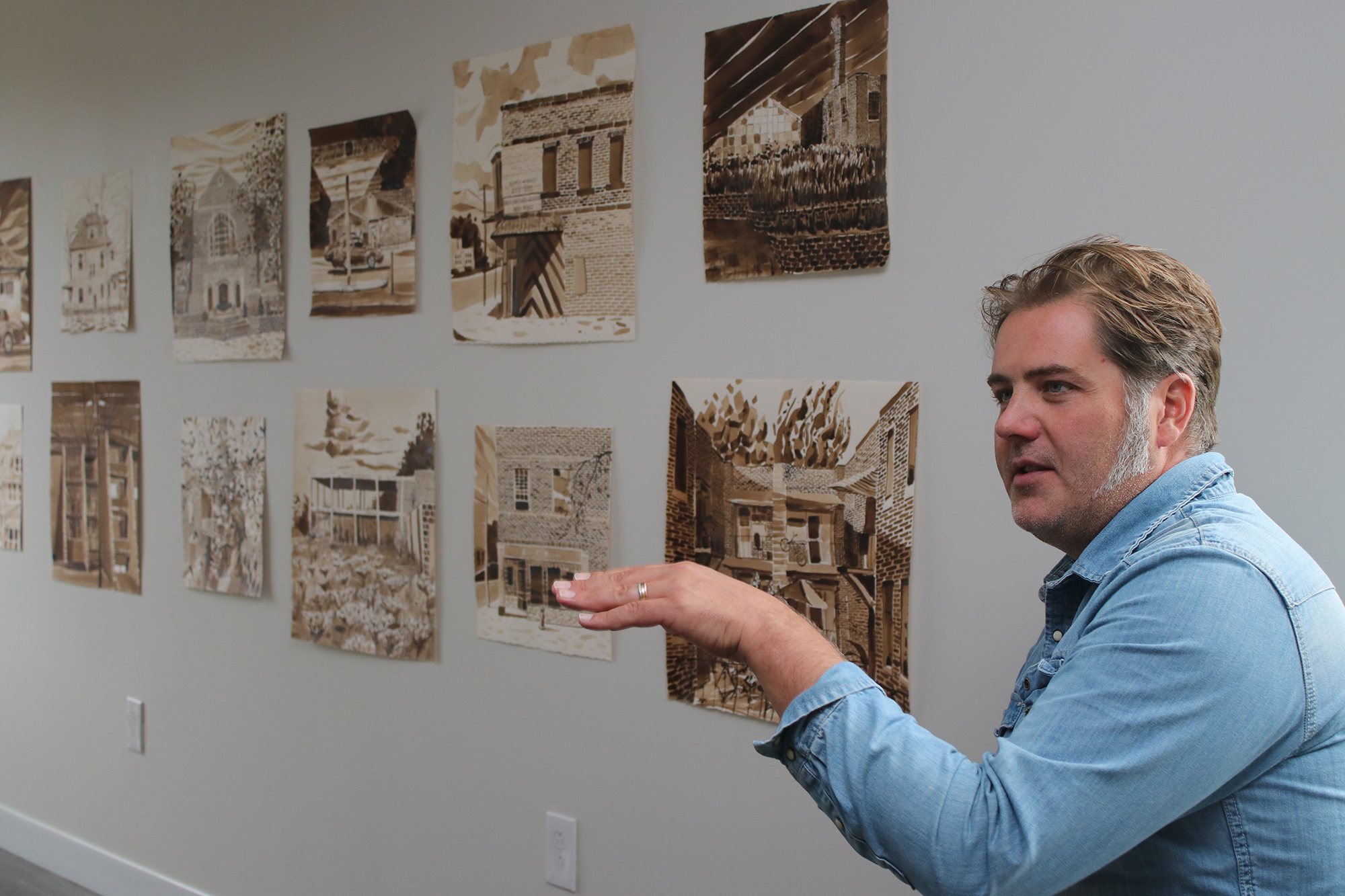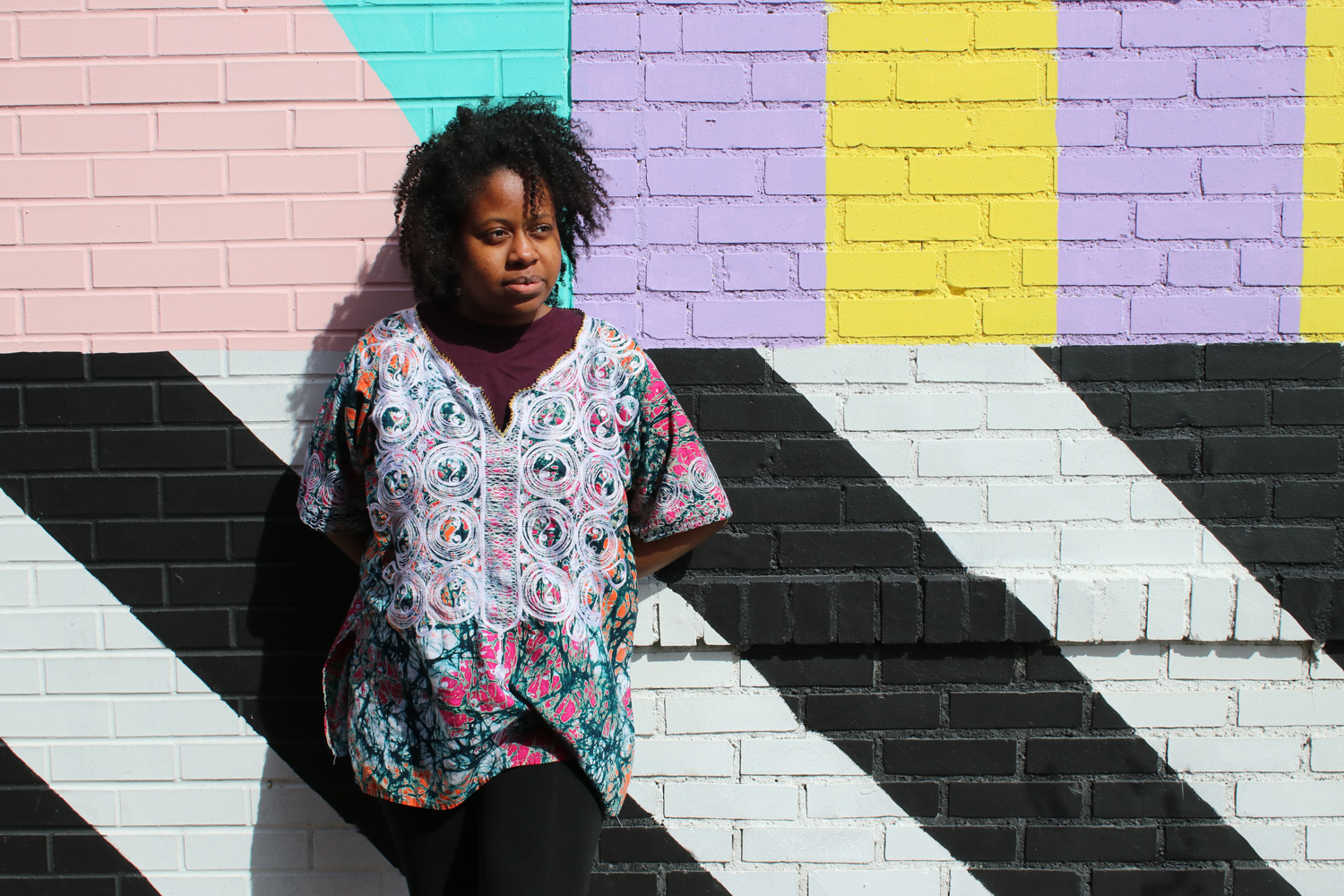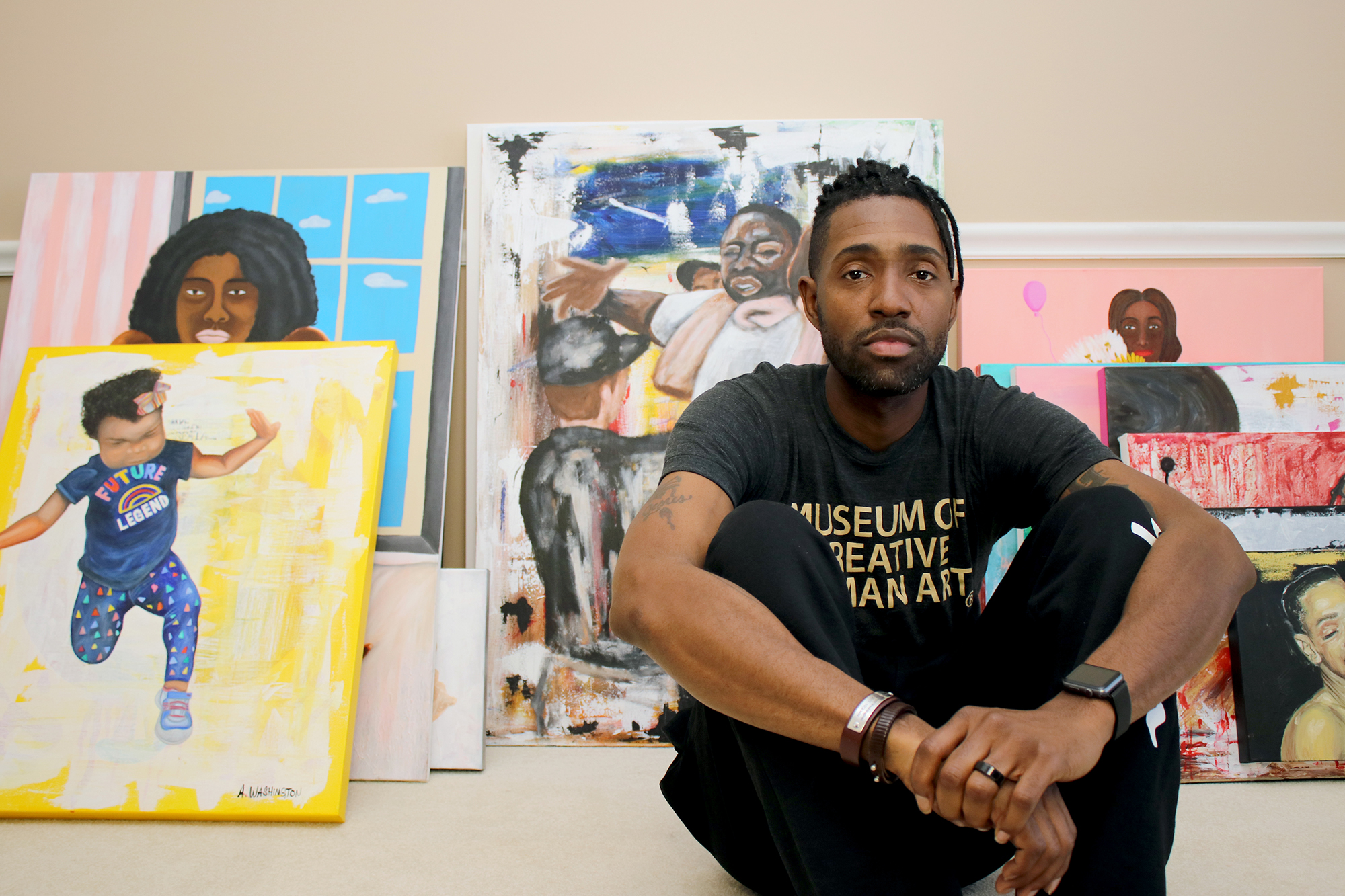By Michael C. Butz
• Lives & Creates Cleveland’s Buckeye-Shaker neighborhood • Degree BFA from the Cleveland Institute of Art
Like the human condition, much of Dexter Davis’ work in recent years has been multilayered and multifaceted. It demands viewers look closer, deeper, repeatedly — and then reflect on the experience.
That introspective formula has helped Davis, 53, navigate some of life’s challenges, like growing up in Cleveland’s riot-heavy Hough neighborhood in the 1960s and ’70s and losing his mother at an early age. For viewers of his art, he hopes it might lead to increased understanding of the themes he explores, including police brutality, poverty and widening socioeconomic gaps.
The common denominator is his focus on the human element.
“All of my work is different … but when it comes down to it, it’s about humanity,” he says. “That’s what I’m concerned with – humanity itself.”
Davis’ art challenges. His newest work, “SOS, Blackface,” on view in the Full Fathom Five group show at Progressive Insurance in Mayfield Village, consists of nine portraits of unnamed identities in a tight grid formation. The multimedia prints require viewers to examine their reactions to Davis’ color combinations, intricate designs and wide range of materials (charcoal, wood block prints, watercolor and graphite).

“Most of the work, when I put it together, it’s made up of many,” he explains. “When you look closely, you see the faces are made out of people – all types of people. Each face has several different parts to it that make it what it is.
“Many makes one, sometimes. The force of many makes one,” he adds. “‘SOS, Blackface’ … basically, it’s about if everybody works together, things can happen.”
The piece evolved from several of Davis’ previous works, including “SOS,” a series of prints about the interaction between police and African-American communities; “White Light/Black Face,” a piece about black-on-black crime; and “Twelve Dead,” a series about shooting victims.

Davis feels the personal suffering inherent in those societal problems goes largely unnoticed, but he hopes his art helps plug that hole in a way that builds better understanding of the issues and brings about meaningful change.
“My art communicates something to people, but it’s up to the people to embrace it or look at it,” he says. “I don’t really want to be preachy, because I don’t like when people preach to me, but I want to give people a space – a bridge, I always say, so they can come across slowly and see what’s going on.” CV
Lead image: Dexter Davis. Photo by Michael C. Butz.











